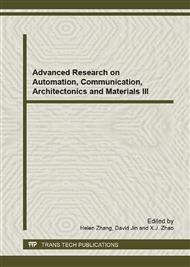p.195
p.199
p.203
p.208
p.215
p.219
p.223
p.227
p.231
Research on Mechanical Automation with Analysis of Modeling Train Collision Accident Based on Stochastic Petri Net
Abstract:
In this paper, we study the mechanical automation with analysis of modeling train collision accident based on stochastic Petri net and propose a model of train collision accident based on the theory of stochastic Petri net (SPN), and verified the validity of the model by testing its soundness. By isomorphic to Markov chain, we also can carry out quantitative analysis of the train collision accident. According to the data extracted froma large number of historical data of the accident statistics, we have carried out a case analysis and discussion, and the results presented in this paper may be useful to the railway safety management.
Info:
Periodical:
Pages:
215-218
Citation:
Online since:
August 2013
Authors:
Price:
Сopyright:
© 2013 Trans Tech Publications Ltd. All Rights Reserved
Share:
Citation:


